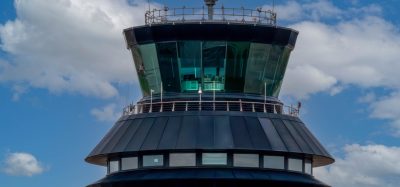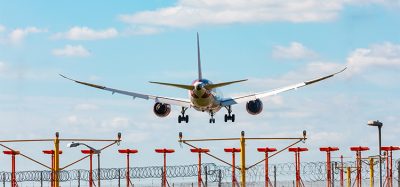Creating a commercial airport with a private terminal experience: Red Sea International (RSI)
Posted: 1 December 2024 | | No comments yet
Michael White, Chief Commercial Officer of Red Sea International Airport, spoke with International Airport Review Editor, Holly Miles, about the experience passengers will receive at the airport and why it will be an airport like no other.
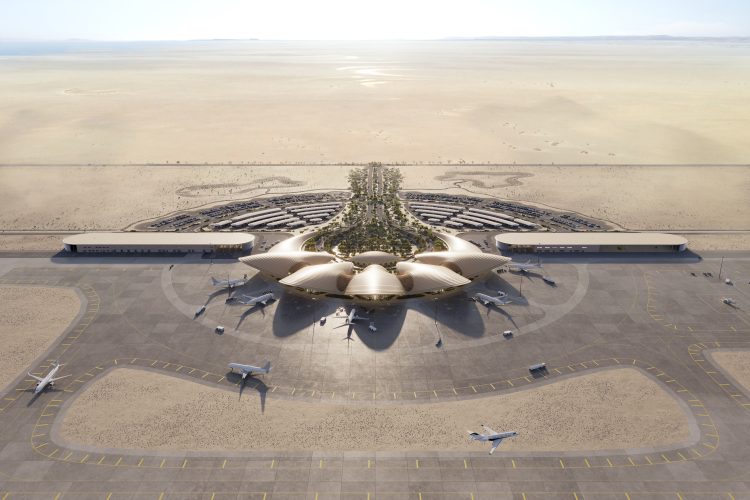

Credit: Red Sea International
The design of Red Sea International (RSI) is very unusual. It looks like the airport of the future! What was daa International’s involvement in the three stages?
We’ve been involved in the project since 2020, and we have three phases to our contract with Red Sea Global (RSG), the airport’s developer. The first phase of RSI was design validation, so we supported RSG as they went through the design process for the airport. But the design itself comes from Foster + Partners and Jacobs. We validated things more from an operational perspective than we did an architectural perspective. The second phase was a commissioning phase. And then the third phase, which is the phase we’re in now, is the operation phase. So, we now have our O&M phase of the contract activated and will progress this for a further 10 years.
What is the vision for the airport in terms of the luxury tourism destination that it serves?
The reason Red Sea Global decided to construct RSI is to ensure a consistent level of service between the destination and the airport. There are multiple examples around the world where there is a disparity between the experience a guest might enjoy at a destination and that same guest’s experience at the associated airport. So, the focus was on making that seamless, ensuring guests are being treated to a five-star experience from the moment they land.
The five departure suites at RSI are arranged as a series of pods. With a focus on providing a personalised and luxurious atmosphere, the pods are designed as smaller, intimate spaces to enhance passenger comfort and to provide the ambience that you would expect in a five-star hotel.
Each pod will feature spacious waiting areas on the ground floor where passengers will enjoy a relaxed, comfortable seating space and be treated to complimentary Saudi coffee and dates. There will also be a lounge on the mezzanine level available to passengers travelling in first or business class. The experience for the passengers will be really unique, and one they would not have at other airports.
Join us live: Shaping the Next Generation of Hold Baggage and Air Cargo Screening
Join us live for an insightful webinar on 11th December at 14:00 GMT, in collaboration with Smiths Detection, as we explore the strategic balance of operational efficiency, regulatory compliance, and sustainability in high-volume security environments.
This session offers a focused look into future-proofing your security strategy.
Key learning points
- Cost Reduction: Strategies to minimize bag travel time while simultaneously reducing operational costs.
- Regulatory Roadmap: Insights into the next wave of regulatory changes and their impact on future investment decisions.
- Sustainable Systems: Practical approaches to building sustainability into security systems and lowering the total cost of ownership (TCO).
- Scalable Solutions: Real-world examples of scalable systems supporting current airport growth and preparing for tomorrow.
Register now for expert insights, case studies, and actionable strategies on operational efficiency!
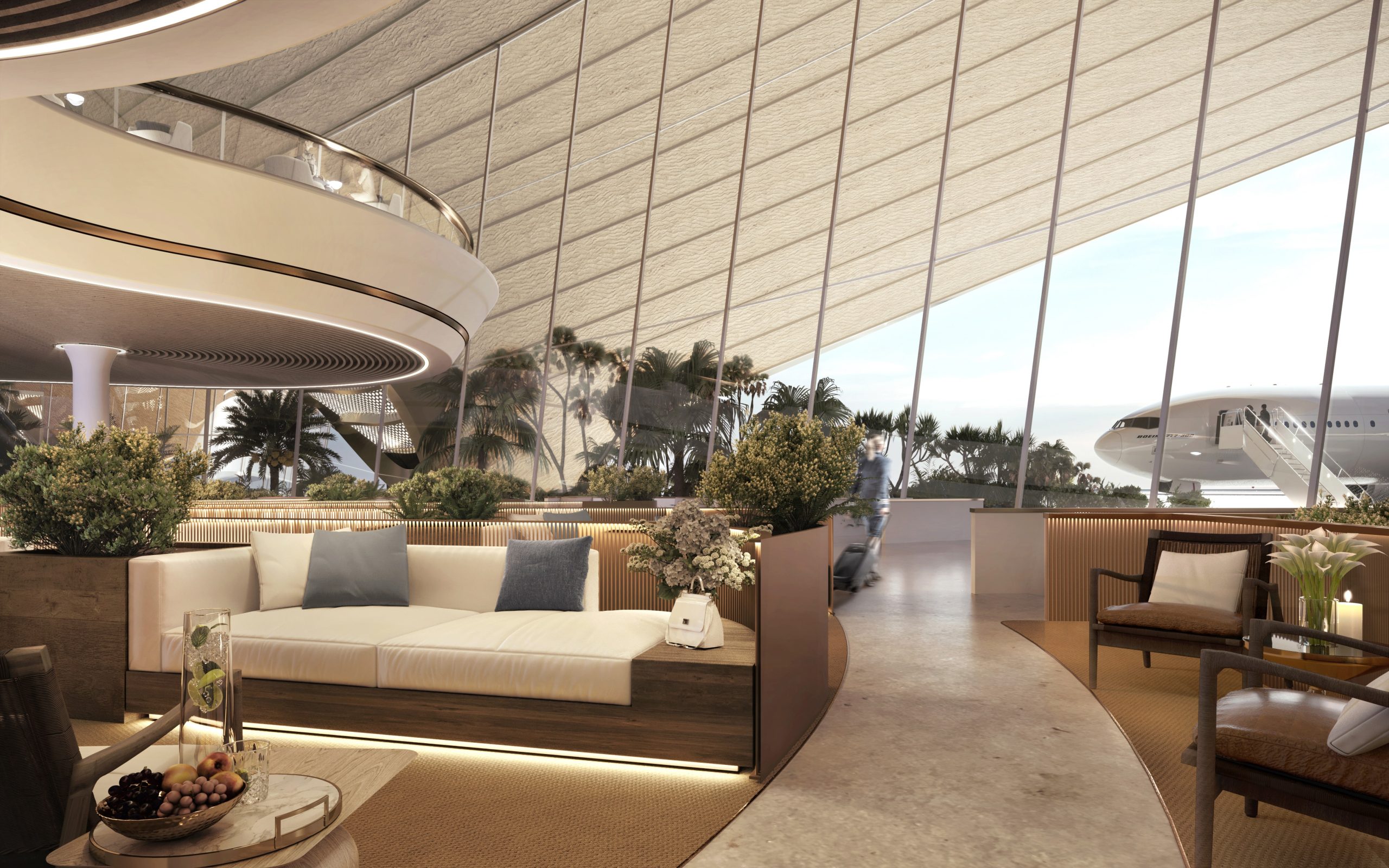

The Red Sea International Airport is designed to feel like a private terminal and to reduce the dwell time of the passenger as much as possible through innovative services and technologies. Credit: Red Sea International
The terminal aims to bring the private terminal experience to every traveller. This is quite an ambitious task for a commercial airport. How are you going to go about doing this?
The design of the main terminal at RSI draws inspiration from the natural elements of the desert, oasis and sea, aiming to redefine the travel experience by offering a sense of tranquility that passengers will not have encountered at a commercial airport previously. With this in mind, the layout of the airport was split in to five separate pods so as to create a personalised and luxurious atmosphere reminiscent of a private aviation terminal rather than the dynamic and sometimes stressful environment of a conventional commercial airport.
Guests flying out of The Red Sea, will be able to check-in their bag at their respective hotel, enjoy the destination for as long as they can, and go to the airport later than they normally would.”
We’re looking to fast-track the arrival experience at RSI by introducing a smart luggage solution. We’re working with IATA and other parties to put this solution in place, which means that guests arriving at The Red Sea do not need to wait at the baggage carousel unless they request that their luggage is directed there. Otherwise, their luggage will go directly to their respective hotel.
As for the departure journey, the idea is to have remote check-in, which will be done at the hotels. Guests flying out of The Red Sea, will be able to check-in their bag at their respective hotel, enjoy the destination for as long as they can, and go to the airport later than they normally would. Guests would whistle through departure and dwell in the airport for a much shorter amount of time than they would at other airports.
The terminal is said to have a resort-like feel and it will be powered by 100% renewable energy. What role does sustainability play in your plans?
Sustainability is central to The Red Sea destination as a whole. The standards that are being pioneered by Red Sea Global from a construction perspective are unprecedented, especially in Saudi Arabia, but also worldwide.
The whole destination is to be 100% powered by renewable energy through solar power generated at The Red Sea. This includes the airport and, generally, where there’s a feasible and practical electrical option available for vehicles and equipment at the airport, this has been or will be procured.
RSI is also currently equipped with the infrastructure to provide sustainable aviation fuel (SAF) and will be the first airport in Saudi Arabia to offer it.
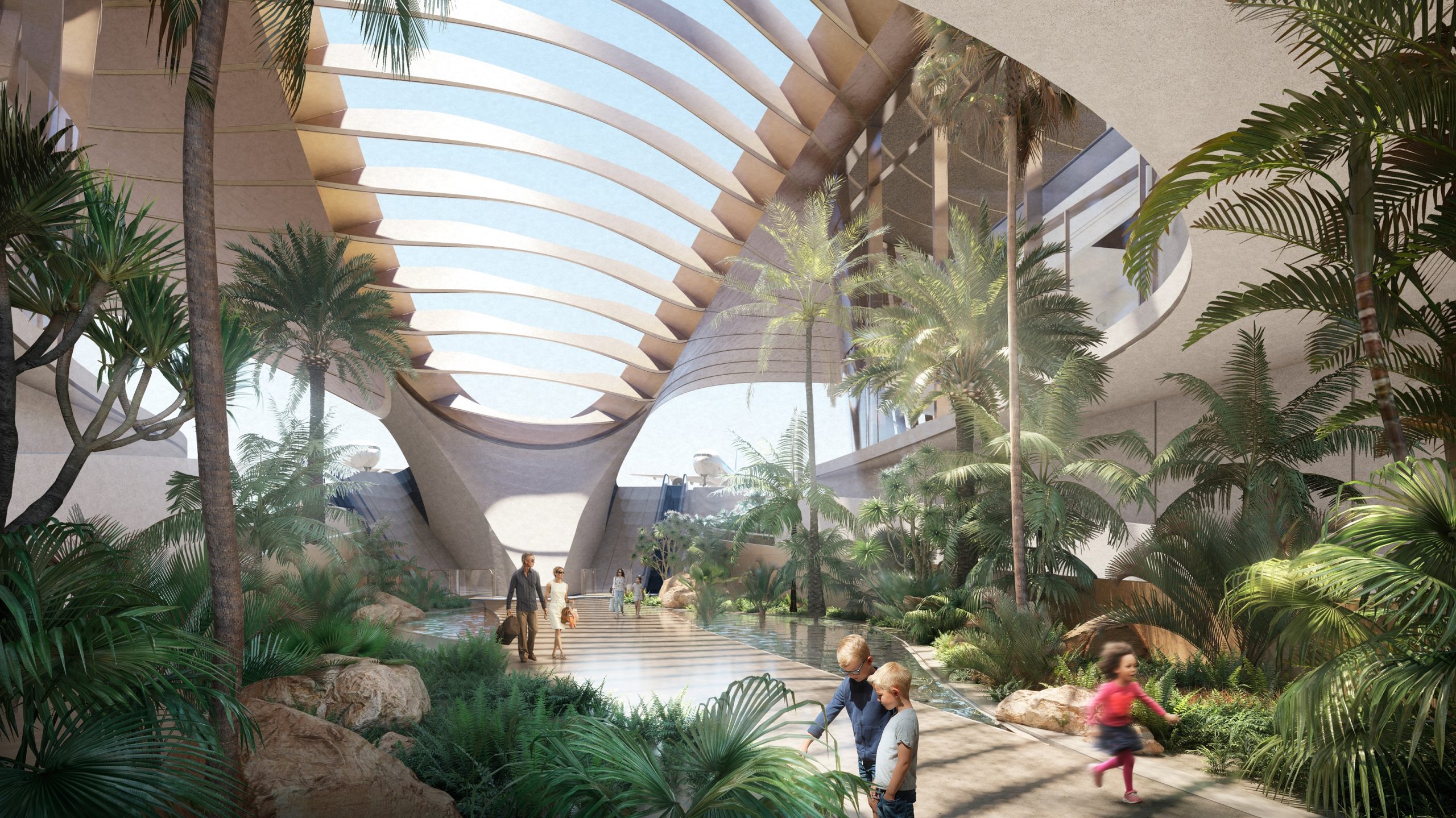

The terminal should never feel crowded according to White. The space will feel intimate, airy and calm. Credit: Red Sea International.
RSI will be a state-of-the-art smart airport. What does this mean to you?
It means a truly seamless experience.
We’re working closely with the regulator, with Saudi government entities, to bring in solutions such as a fast-tracked Travel Document Authorisation System (TDAS).
Other concepts we’re exploring are a remote check-in process and smart luggage solution. Those two elements alone will reduce dwell time significantly and aren’t offered by other airports around the world. You will essentially be able to go straight through immigration and into the airport.
The Red Sea International is due to serve one million visitors annually by 2030. However, this will be capped. This is quite unusual, why would you start off by putting a cap on this number?
Red Sea Global itself has put this limit on the destination. They have undertaken studies and environmental assessments and determined that this is the maximum carry capacity of the environment. So, in line with their promise and commitment to the environment, they limited development to accommodate no more than one million visitors.
Red Sea Global is making a genuine commitment to the environment, saying that it would forego potential demand in order to protect it. I’ve certainly not come across any other project or destination doing something similar.
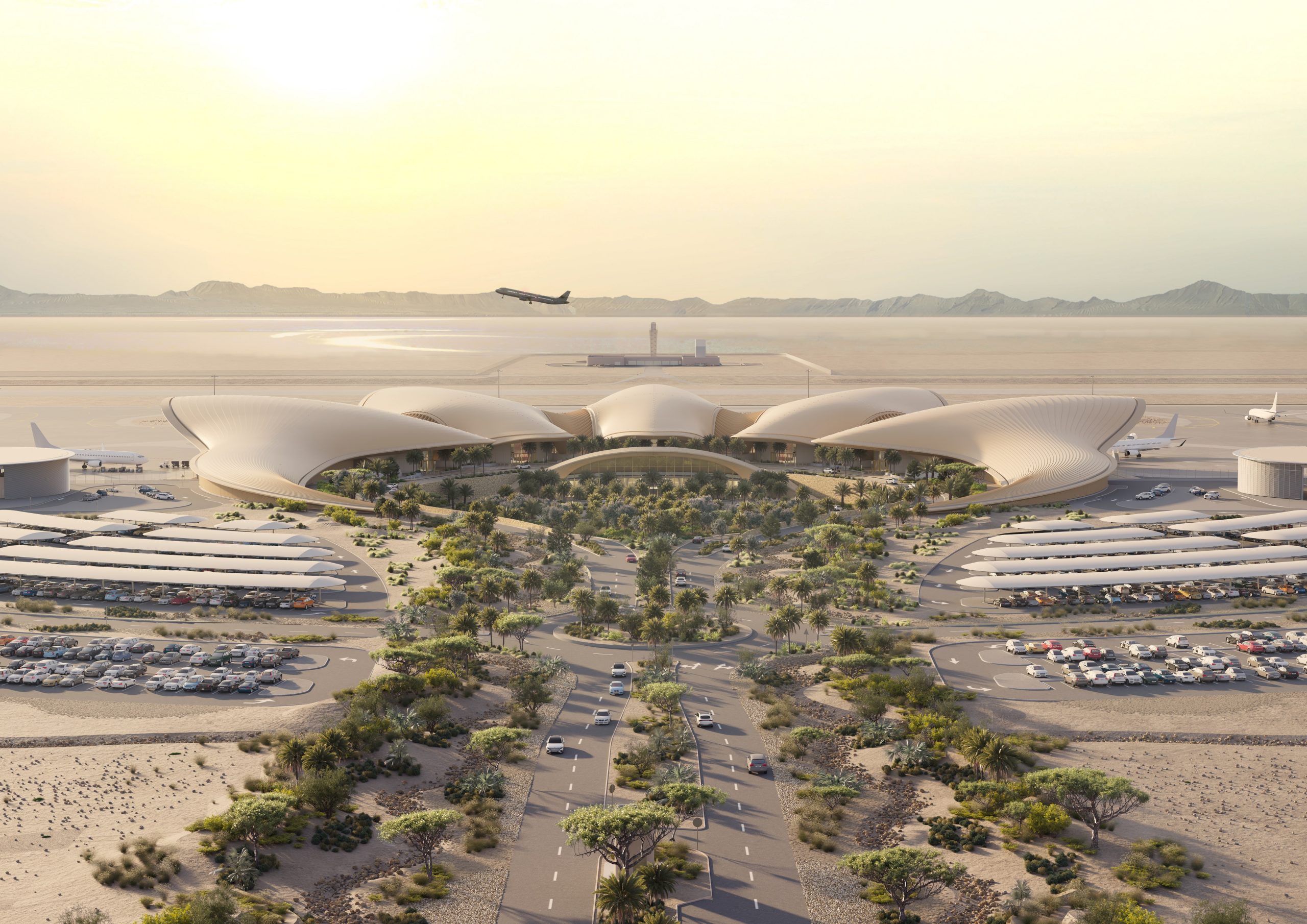

Red Sea International has five distinct ‘pods’ which will operate as a mini terminal. Credit: Red Sea International
How many hotels are there in the development?
We currently have three hotels open: Six Senses Southern Dunes, The Red Sea, The St. Regis Red Sea Resort and Nujuma, a Ritz-Carlton Reserve with more scheduled to come online by the end of 2024.
But from next year we have our hub island, Shura Island, opening. It’s going to have around 2,200 keys and will be an offering of five-star hotels.
What are your predictions for passenger traffic looking like for this year and 2025?
Currently, we have eight direct flights per week. We’ve got four from Riyadh and two from Jeddah with Saudia, and two from Dubai with flydubai.
What we have is an unprecedented product and as such we have conducted extensive studies and forecasting exercises to estimate demand. Saudi Arabia is currently growing its leisure tourism sector very successfully and we are seeing a large number of international source markets manifest.
We see a lot of potential from Europe especially from countries such as Switzerland, Germany and elsewhere too. We’re still in the initial phases of planning for these markets with more to be added from 2025 onwards.
How will you get to the various islands?
There’ll be a few modes of transport available to different parts of the destination. There’s been a bridge constructed across to the Shura Island and you will reach it via electric vehicle. For the ones available by road, you’ll take an electric vehicle. To reach some of our more satellite islands, which are further away and not accessible by bridge, there will be a combination of electric vehicle to a marina and then by boat from there.
Red Sea also has a seaplane airline called Fly Red Sea, which we expect is going to operate and transfer about 10% of guests to these satellite islands.
Project file:
|
About the interviewee
Michael White is the Chief Commercial Officer at Red Sea International Airport (RSI), the primary gateway to the Red Sea and AMAALA destinations.
Michael leads the commercial function for Red Sea International Airport (RSI), a 1 million guest capacity airport that is committed to providing the qualities of a five-star hospitality experience, ensuring a stress-free, seamless, and sustainable airport journey for all guests.
He and his team are responsible for RSI’s air service development, commercial contracts, procurement, and marketing.
Michael has a bachelor’s degree in Geography from the University of Portsmouth.
Join our free webinar: Transforming Airport Security – Innovation, Impact, and the Passenger Experience
The landscape of airport security is undergoing a profound transformation, driven by evolving threats, technology, and passenger expectations. This webinar focuses on how AtkinsRéalis has been transforming security processes at some of the world’s busiest airports with smarter, more adaptive solutions.
Date: 4 Nov | Time: 14:00 GMT
REGISTER NOW TO SECURE YOUR SPOT
Can’t attend live? No worries – register to receive the recording post-event.
Issue
Related topics
Airport construction and design, Airport development, Innovation, New technologies, Operational efficiency, Passenger experience and seamless travel






